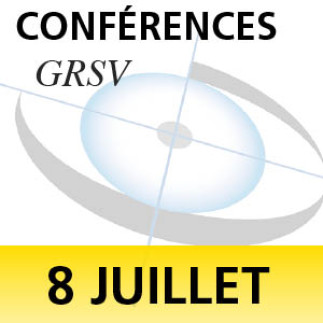Les conférences du Groupe de la recherche en sciences de la vision de l'École d'optométrie avec l'appui de Nikon Canadan présentent une conférence intitulée :
Vision Realistic Rendering
Conférencier : Professor Brian A. Barsky
Computer Science Division and School of Optometry
University of California, Berkeley
_______________________________________
ABSTRACT Vision-realistic rendering (VRR) is the computer generation of synthetic images to simulate a subject's vision, by incorporating the characteristics of a particular individual’s entire optical system. Using measured aberration data, VRR modifies input images to simulate the appearance of the scene for the individual patient. Each input image can be a photograph, synthetic image created by computer, frame from a video, or standard Snellen acuity eye chart -- as long as there is accompanying depth information. An eye chart is very revealing, since it shows what the patient would see during an eye examination, and provides an accurate picture of his or her vision. VRR provides images and videos of simulated vision to enable a patient's eye doctor to see the specific visual anomalies of the patient. In addition to blur, VRR could reveal to the doctor the multiple images or distortions present in the patient's vision that would not otherwise be apparent from standard visual acuity measurements. VRR could educate medical students as well as patients about the particular visual effects of certain vision disorders (such as keratoconus and monocular diplopia) by enabling them to view images and videos that are generated using the optics of various eye conditions. By measuring PRK/LASIK patients pre- and post-op, VRR could provide doctors with extensive, objective, information about a patient's vision before and after surgery. Potential candiates contemplating surgery could see simulations of their predicted vision and of various possible visual anomalies that could arise from the surgery, such as glare at night. The current protocol, where patients sign a consent form that can be difficult for a layperson to understand fully, could be supplemented by the viewing of a computer-generated video of simulated vision showing the possible visual problems that could be engendered by the surgery.
Recent work on correcting visual aberrations with computational light field displays will also be briefly introduced.
BIOGRAPHY
Brian A. Barsky is Professor of Computer Science and Vision Science, and Affiliate Professor of Optometry, at the University of California at Berkeley, USA. He is also a member of the Joint Graduate Group in Bioengineering, an interdisciplinary and inter-campus program, between UC Berkeley and UC San Francisco, and a Fellow of the American Academy of Optometry (F.A.A.O.). Professor Barsky has co-authored technical articles in the broad areas of computer aided geometric design and modeling, interactive three-dimensional computer graphics, visualization in scientific computing, computer aided cornea modeling and visualization, medical imaging, and virtual environments for surgical simulation. He is also a co-author of the book An Introduction to Splines for Use in Computer Graphics and Geometric Modeling, co-editor of the book Making Them Move: Mechanics, Control, and Animation of Articulated Figures, and author of the book Computer Graphics and Geometric Modeling Using Beta-splines. Professor Barsky also held visiting positions in numerous universities of European and Asian countries. He is also a speaker at many international meetings, an editor for technical journal and book series in computer graphics and geometric modelling, and a recipient of an IBM Faculty Development Award and a National Science Foundation Presidential Young Investigator Award. Further information about Professor Barsky can be found at http://www.cs.berkeley.edu/~barsky/biog.html

